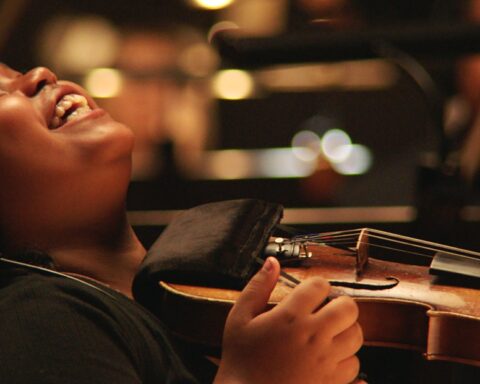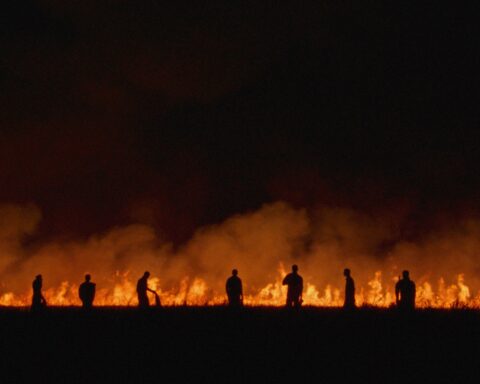The B-Side: Elsa Dorfman’s Portrait Photography
(USA, 76 min.)
Dir. Errol Morris
Starring: Elsa Dorfman, Allen Ginsberg
Errol Morris has won great acclaim for his documentaries on powerful, conflicted men like Robert McNamara (The Fog of War) and Donald Rumsfeld (The Unknown Known), so it’s fascinating to see him make a lovely reversal in The B-Side: Elsa Dorfman’s Portrait Photography, and create a feature-length profile of a woman who has spent a relatively serene life taking terrific photos. A self-described “nice Jewish girl,” Elsa Dorfman didn’t pick up a camera until she was 28, but when she found her métier, she embraced it wholeheartedly. Quite quickly, she began to photograph the great American poets of the Sixties and Seventies—Allen Ginsberg, Robert Creeley, Anne Waldman—and even captured such international immortals as Jorge Luis Borges and W.H. Auden. Soon, she developed her own practice, which involved taking intimate pictures of families.
After experimentation, Dorfman’s camera of choice, rather eccentrically, proved to be the Polaroid 20×24, which offered up huge images nearly instantaneously. Much of Morris’ film takes place in Dorfman’s basement studio, where she pulls out photos assembled in her archive. The images are the photographer’s “B sides,” the portrait pictures, which had been rejected by the families who had participated in the shoot. A metaphor from the Fifties and Sixties when records used to have an A (hit) side and a generally ignored B-side, Dorfman’s rejects reveal the pleasures of her art practice. In many cases, one member of the family blinks, an imperfection that allows the viewer and Dorfman to feel even closer to the people being photographed. In others, there are technical issues, but in all of Dorfman’s failures, the relationship between members of the family is revealed, which is, after all, the essence of what makes a group portrait successful.
Morris is making a profile here, and he couldn’t have chosen a more pliable subject. Elsa Dorfman is happy to talk about her love of cameras and taking photographs. It’s easy to see how this friendly, funny person, who seems completely without pretense, could disarm an individual or family and turn the often-awkward act of taking a photo into one of humour and collaboration. While talking about being a photographer, Elsa Dorfman easily segues into stories about her husband, the acclaimed civil rights lawyer Harvey Silverglate, their son and his godparents, the feminist Andrea Dworkin and Allen Ginsberg. Honing in, Morris urges Dorfman to tell stories–and many involve Ginsberg, who was one of her closest friends for nearly 30 years. As a key member of the Beat Generation, Ginsberg was able to introduce Dorfman to poets, whom she memorably photographed, but he looms far larger in her story, as a fellow radical Jew and the subject of some of her finest photos. We see Ginsberg naked, in his “birthday suit,” and in his finest formal jacket, tie and pants—literally what he wore when he was buried.
Errol Morris is a brilliant writer on photography. His book of essays Believing is Seeing, is a precise interrogation into the meaning and history of some of the key photos ever taken. In The B-Side: Elsa Dorfman’s Portrait Photography, Morris allows his viewers, and himself, to look precisely at the quite different beauty of Polaroid, portrait photography and Elsa Dorfman. The legacy of Polaroid is Instagram—the moment captured instantly and distributed forever. Portrait photography’s splendour still eludes the majority of academics and critics, who prefer the rigours of street photography or the perilous journeys of experimentalists. As for Elsa Dorfman, you’d have to be heartless not to respond to the artistic obsession of this “nice Jewish girl.”











